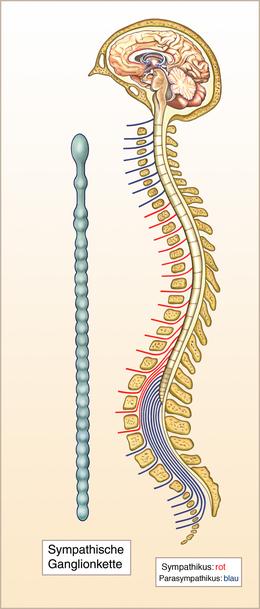Structure and function of the autonomic nervous system
Author: Maria Yiallouros, English Translation: Dr. med. habil. Gesche Tallen, Last modification: 2022/01/09 https://kinderkrebsinfo.de/doi/e242032
The nervous system is considered a superior body system. It consists of various divisions, by which the organism communicates with the environment while simultaneously regulating inner body functions. The body’s multiple nerves form the so-called peripheral nervous system; brain and spinal cord are known as the central nervous system.
The autonomic (or vegetative) nervous system, is the division of the nervous system that regulates all those bodily functions that cannot be controlled consciously.
Around the clock, it supervises all of the body’s basic, mostly unconscious vital functions, such as heart rate, digestion, respiratory rate, blood pressure and urination. Also, secretion of sweat and the automatic increase of the heart rate when exercising are regulated by the autonomic nervous system.
The autonomic nervous system consists of two major parts, the sympathetic and the parasympathetic nervous system, which control organs in opposite ways.
- The sympathetic nervous system stimulates energy consumption upon stress or during increased activity. For example, it accelerates heart and respiratory rates and raises the blood pressure
- Instead, the parasympathetic nervous system helps with storing and recharging energy during phases of rest: for example, it slows down the heart rate and stimulates both glands and muscles in the digestive tract.

